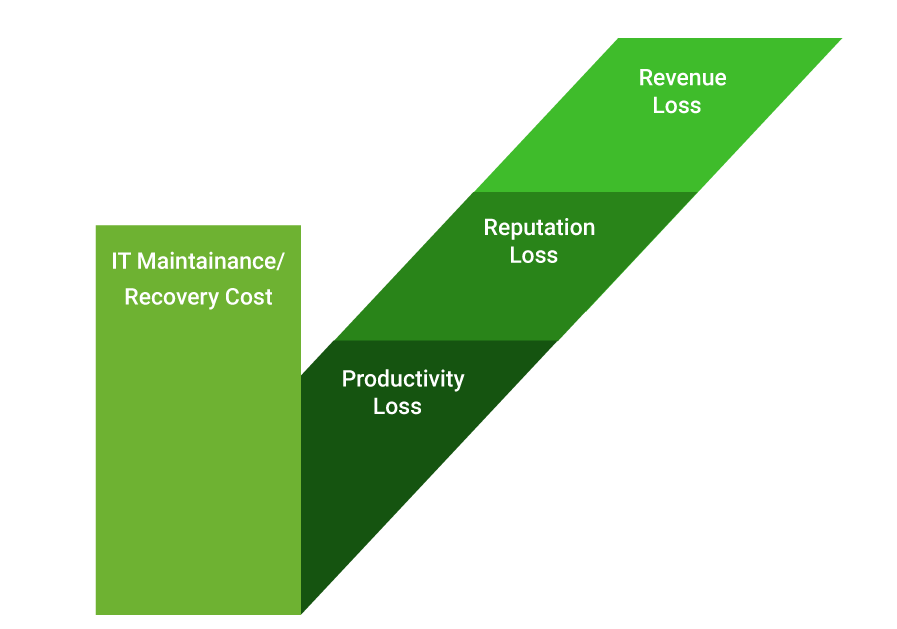Data storage in the modern business environment is complex, IT faces stronger challenges to manage data and keep data safe. Using a limited budget, you must make sure that storage you bought fulfill everyday business workloads such as database, virtualization and multi-media applications. Unified Storage is getting popular for enterprise because it supports file and block storage service such as CIFS, NFS, FTP, iSCSI and Fibre Channel in a single storage system, provides solid data security and backup plan. All these reduce the management complexity in data center, provide better ROI to business.
What Is SAFE Unified Storage?
There are many advantages to deploy data storage infrastructure with safe unified storage:
- Less hardware
A unified storage support file-level and block-level services, you can use it as a NAS storage or connect it with a server for complicated enterprise block storage needs.
There is no necessary to buy two or more storages to support these applications. - Single management
To manage multi storages for every, you need to master all management tool of every storage system. A unified storage supports many protocols, integrated all management tools to one system, reduce the management effort switching among different storage services. - Better ROI
A unified storage reduces the number of storages for business application deployment. It allows users to use the same platforms in wide range of applications. Helps business plan their budget more efficiently.
The adventures of a unified storage make it ideal for enterprise applications. Address the challenges include rapid data growth rates, datacenter workloads and limited IT resources and budgets in today’s data storage environment.
A unified storage for enterprises supports multiple protocols for different data services, connects to cloud to provide modern cloud services, runs virtualization service, and many different usages. Because a unified storage runs so many important missions, reliability is one of the biggest concerns for unified storage.
Hidden Cost Hurts!
A study showed that over a third of enterprises had an outage or severe IT service degradation in the past year, and 50% had an outage or server IT service degradation in the past three years. And the outage could cost over $5 million per hour for an enterprise.

While unplanned outages need you to spend time and money on IT maintenance and hardware repair fee, these outages in fact impact much more to the whole organization. An outage that force Delta airlines to cancel 280 flights cost them over $150 million!
Even a planned server shutdown may cause unpredictable loss. Server rebooting may relate to many issues like it may take long times to run internal check, server not restart successful, and even worse – data loss.
Business reputation and the revenue are two significant cost that you must be aware of when you face a service downtime. Your customers get angry if you cannot provide the service when they need it, potential customers will jump to another ship when they cannot find your information just on time. All these could lead to a bad image and eventually hurt your business reputation forever.

Save-Time, Save-Cost, Safe to Use
The goal of unified storage is to provide reliable data service to the enterprise. It should help to protect data and lower the business loss for an unplanned service downtime.
A unified storage with high availability usually comes with several features:
- Redundancy modular design
The storage consists of dual controllers, redundant PSU, FAN, and other key components. If there is any hardware damage, the storage still has a spare up and running before the issue fixed. - High-availability software design
The storage can detect the loss of a controller or network, and make sure the service is not down when these issues happen. - Software upgrade without downtime
The storage will need software upgrade to have bug fixed and get new useful features, a unified storage with dual controller design can help to make sure the service keeps running during the upgrade and rebooting process.
Nonetheless, you still face the downtime issue when you need to upgrade the storage hardware, it could happen when you need to have the storage run faster by adding more RAM, replace with a higher bandwidth network adapter, or upgrade the motherboard or CPU to get better computing power.
Ever Running Matters?
Most computer servers, storage devices need to be shut down for key components upgrade like CPU, RAM and network adapters. Even if a unified storage with dual controller design, most of the storages still need to be shut down because the system does not allow different hardware configuration running at the same time.
Only limited first-tier storage providers eliminate the downtime for hardware upgrade, so IT can easily upgrade the storage hardware without stopping the running service. This give enterprises more advantage because you won’t need to spend time on IT maintenance, no service downtime so your daily operation still running as usual and your customer won’t be bothered by the downtime. Another advantage to the business is that you can purchase less powerful storage in the beginning and upgrade later when necessary, so your business budget could be planned more flexibly.
In modern business day, your organization must realize the importance of keeping your IT service running without disruption. Service downtime hurts your business revenue and also the reputation.
A good unified storage not only guarantees business service when there is an unplanned power outage or hardware damage, also delivers non-disruptive data connectivity for both software and hardware upgrade.
QSAN XCubeNXT is built with a reliable high-availability architecture, business can rely on XCubeNXT to prevent the service unavailability from an unexpected downtime, and is able to upgrade with better CPU, RAM and network adapters without stopping any service, helping enterprises to focus on the business development. Check here to see how XCubeNXT protects your business.



